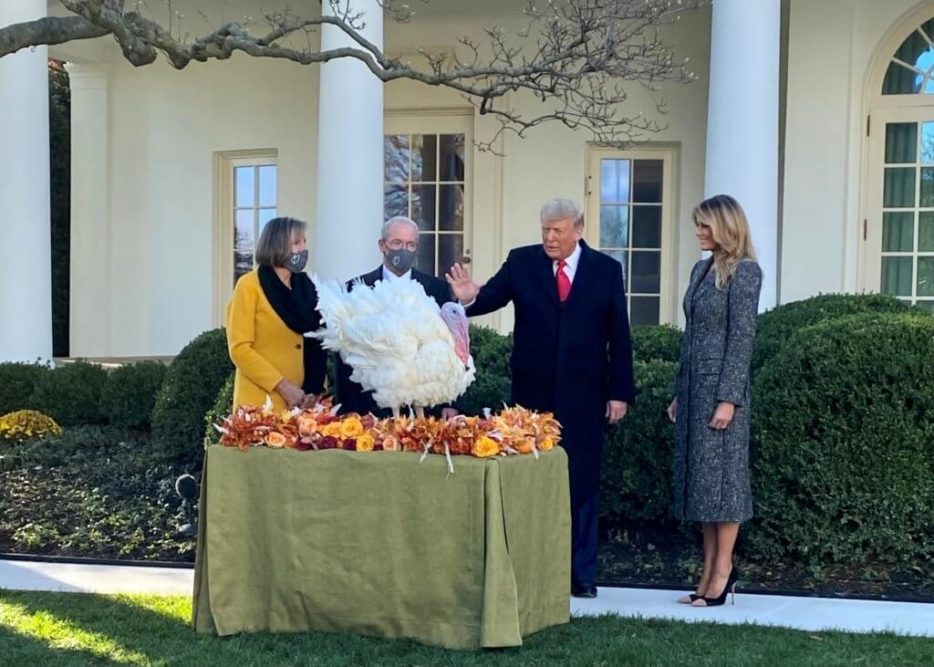WASHINGTON – As part of an annual Thanksgiving tradition dating back to 1947, two live turkeys traveled to the nation’s capital where they received a formal pardon from President Donald J. Trump on Nov. 24 in the White House Rose Garden. Ron Kardel, chairman of the National Turkey Federation (NTF) presented “Corn,” the National Thanksgiving Turkey to President Trump and “Cob,” the alternate bird during a ceremony also attended by Kardel’s wife Susie and the First Lady, Melania.
Having made the trek to Washington for the ceremony, the two birds spent the night in the lap of luxury after checking in at the Willard InterContinental hotel, near the White House. Kardel, a longtime turkey farmer from Iowa, said participating in the event was a special opportunity, especially this year, when most Thanksgiving celebrations have been downsized due to the coronavirus (COVID-19) pandemic.
“As Americans prepare for what will undoubtedly be a unique Thanksgiving holiday, it is an honor to be invited to continue this beloved tradition of presenting the National Thanksgiving Turkey to President Trump and the First Lady,” Kardel said. “This Thanksgiving, possibly more than ever before, we are grateful for the opportunity to spend time with loved ones, no matter what celebrations may look like.”
According to the NTF, the presentation of the turkeys at the White House commemorates the unofficial beginning of the holiday season while giving the president and the nation the opportunity to focus on the meaning of Thanksgiving. It also promotes the life’s work of America’s turkey growers and the importance of agriculture in America.
President Trump’s remarks highlighted the blessings of living in the United States.
“This week is a time for all of us to remember that we live in the greatest and most generous country on Earth,” he said.
True to tradition, the now-famous turkeys will travel to Iowa State University (ISU) to live on campus in a customized enclosure and be cared for by ISU’s animal science and veterinary medicine students and faculty. They will be available for viewing by the public and used to promote the university’s animal science and poultry science programs.



